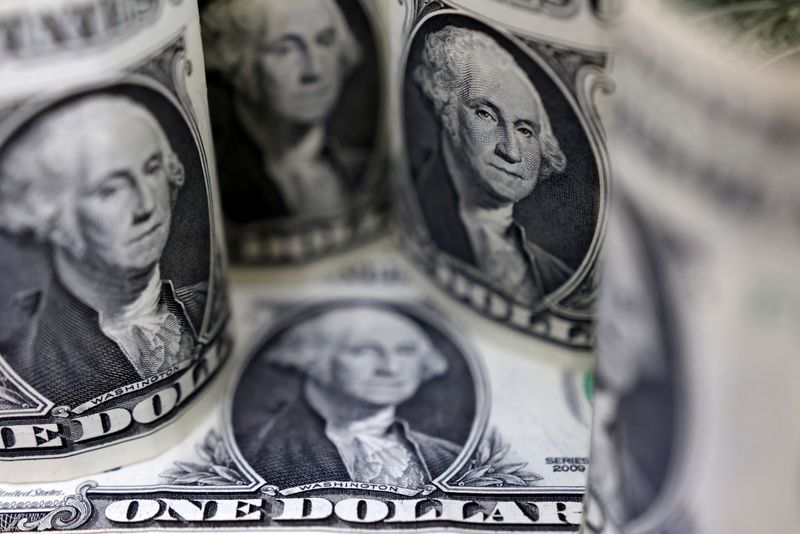Tonix Pharmaceuticals stock halted ahead of FDA approval news
Investing.com - The U.S. dollar steadied Monday, but was on course for quarterly losses given persistent concerns that increased trade tariffs under U.S. President Donald Trump will ignite inflation and crimp economic growth.
At 03:20 ET (08:20 GMT), the Dollar Index, which tracks the greenback against a basket of six other currencies, traded largely unchanged at 103.700, on course for a loss of over 4% for the first quarter.
Dollar hit by tariff fears
Currency traders are nervous ahead of a new round of reciprocal levies that the White House is due to announce on Wednesday, especially as Trump said late on Sunday that essentially all countries will be slapped with duties this week.
“What the FX market is indicating through spot, options, and positioning is a greater focus on the domestic implications for the U.S. rather than on the countries being targeted with tariffs,” said analysts at ING, in a note.
“There may also be a lack of trust in Trump’s ability to keep tariffs in place for very long, given the inflation and activity risks.”
The dollar was under additional pressure from a flight to the safety of U.S. Treasurys, which sent the yield on the 10-year note sliding as much as 6-1/2 basis points to 4.19% on Monday.
There are also an abundance of important U.S. economic data indicators due this week, given the great sensitivity of the greenback to macro figures of late.
The main releases of the week are JOLTS openings and ISM manufacturing on Tuesday, ADP payrolls on Wednesday, ISM services on Thursday, and payrolls on Friday.
German retail sales rise
In Europe, EUR/USD traded largely unchanged at 1.0830, with the single currency helped by German retail sales in February exceeding expectations, suggesting confidence may be rising in the German consumer.
Retail sales rose by 0.8% compared with the previous month, data showed on Monday, ahead of the flat figure expected.
Germany will also publish inflation data for March later Monday, with the inflation rate expected to drop to 2.4% from 2.6% the previous month.
The euro is on track for a gain of over 4.6% against the U.S. dollar over the first three months of the year.
“The drivers of the pair’s rally have been a re-rating of EU growth expectations based on fiscal spending, and pessimism on US activity,” ING added.
GBP/USD traded 0.2% higher to 1.2961, with sterling gaining after a British government spokesperson said Prime Minister Keir Starmer and Trump had "productive negotiations" towards a trade deal in a phone call on Sunday.
Safe-haven yen rises
In Asia, USD/JPY traded 0.5% lower to 149.06, with the safe-haven Japanese yen benefiting ahead of the new round of reciprocal levies that the White House is due to announce on Wednesday.
The yen was also buoyed by increased speculation over when the Bank of Japan will hike interest rates further. Hawkish signals from BOJ officials, coupled with strong inflation readings in the past two weeks, both cemented expectations for more rate hikes this year, underpinning the yen.
USD/CNY edged 0.2% lower to 7.2514, buoyed by some optimism over the Chinese economy, after manufacturing and non-manufacturing PMI data read stronger-than-expected for March.
The reading furthered the notion that Beijing’s aggressive stimulus measures were now bearing some fruit, and that the Chinese economy will recover in the coming months.
